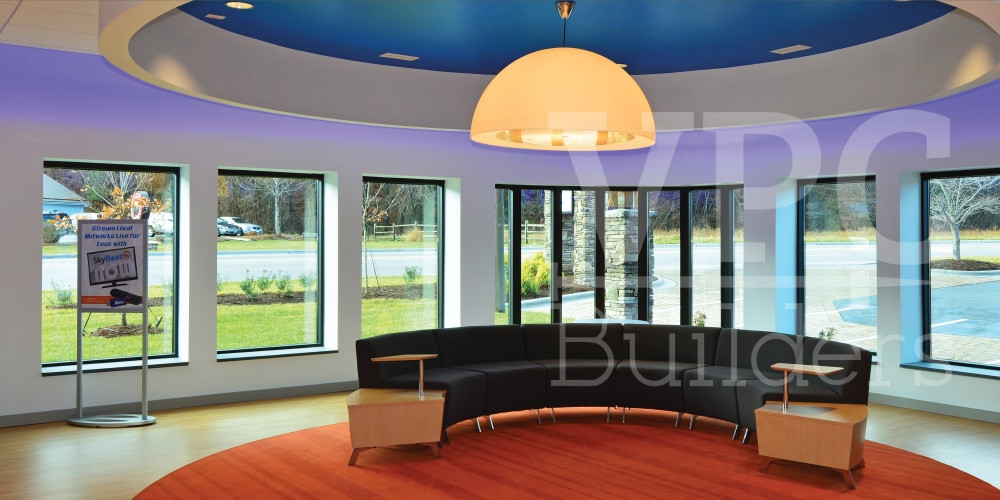The landscape of commercial buildings has changed significantly over the last few decades. As technology continues to advance at an unprecedented rate, our capabilities as businesses — the expectations of customers — evolve in tandem. Many of our modern commercial buildings have shifted from their original purpose to an elevated commercial setting, a place that reflects the advancements of our time.
What exactly does it mean for a modern commercial building to be modern? Is it the architectural style, the integrated technology, or something else entirely? It depends entirely on the kind of setting. Whether it’s a trendy restaurant, a bustling hotel, a sleek office space, or a vibrant retail store, there are unique elements that make such places identifiable as “modern.”
Let’s explore a few of these settings and the fascinating changes that characterize them.
Four Kinds of Modern Commercial Building
Restaurants: From Dining to Experience
In many ways, restaurants have always been about more than just the food (although the food is certainly important). When people go out to eat, they expect an experience for their dollar. While many restaurant buildings in the past were designed to prioritize operational efficiency, many modern locations are far less utilitarian.
Modern restaurants have learned to lean into the “experience” part of dining. While modern techniques can do amazing things for efficiency and sustainability, they also open up all kinds of possibilities for unique aesthetics and ambiance. Open concept floors allow for flexible seating arrangements; wide windows create a spacious and luxurious atmosphere; open kitchens bring a sense of authenticity to the meal and its preparation.
A lot of work goes into modern restaurant buildings behind the scenes, such as eco-friendly lighting, sustainable building materials, and energy-efficient appliances. The collective result of all this work is a more popular and profitable business.
Hotels: From Shelter to Destination
The hospitality industry has seen some of the most obvious changes in building sensibilities over recent years. Many hotels were once simple inns — designed to provide a comfortable place for travelers to sleep and little more. While these locations still exist, of course, they’re a far cry from what most of us would consider “modern.”
A modern hotel is designed with guest experience at the forefront. Lobbies are more spacious than they used to be, often doubling as social areas, workspaces, breakfast seating, and even built-in snack shops. Rooms are frequently seeing bigger and better integrations of technology, including smart thermostats, hidden lighting fixtures, and keyless — or even touchless — room entry.
Modern hotel buildings are also more accommodating for active lifestyles and wellness needs with amenities like gyms and spas. Plus, much like modern restaurants, today’s hotels have a lot to gain from sustainable technology and green building techniques. Automated lighting, green rooftops, and waste reduction initiatives have become staples of the industry, resulting in smaller carbon footprints and more reasonable monthly operating costs.
Offices: From Cubicle to Collaboration
A traditional office building is easy to picture — rows of cubicles, walled-off meeting rooms, and maybe a windowless break room with a coffee maker. Fortunately for the American workforce, our office buildings have seen some of the most dramatic transformations of all in terms of building practices and interior design. Today, rather than building offices to minimize distractions through isolation, we build spaces that foster collaboration, creativity, and wellness.
Open floor plans are far more commonplace in modern offices, allowing for more flexible layouts and reducing that stuffy, claustrophobic feel. Many buildings choose to integrate extra natural light, biophilic design elements, and ergonomic furniture to promote the well-being of employees. Technology also plays a vital role, with smart lighting and thermostats helping to keep things comfortable without breaking the bank. With modern building techniques, there’s never been a better time to work in an office.
Why Modern Commercial Building Practices Matter
You may be noticing some similarities by now. In each of these cases — restaurants, hotels, and offices — we’ve seen a notable shift from traditional norms to a philosophy that prioritizes the experience of those who will inhabit the building. More than ever before, modern commercial buildings are designed with people in mind. After all, if you’re going to spend a significant amount of time indoors, shouldn’t you enjoy being there?
There’s also a lot to be learned from modern green building practices. Sustainability is a big deal, not just for our wallets, but for the future of our planet and the countless people who inhabit it. Here at VPC Builders, we believe we can change the world through mindful building. When it comes time to build the commercial space of your dreams, we’ll be there to help with the industry’s most innovative techniques and ideas.
Build a better future with us. Contact VPC Builders today.

